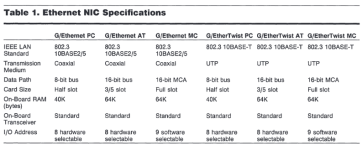ardent-blue
Veteran Member
- Joined
- Jan 1, 2015
- Messages
- 683
Do you want it straight?
The edge connectors remind me of a meth addict's teeth, as in missing some. I might have miscounted, but I looked at the "A" side [component], and I >think< -CHRDY is not populated.
A lot of the logic is from the HCTLS family. I'm no EE, so I can't say if those can accept the speed change from a 286-10 system to a 486SX-25 system -WITHOUT- any -CHRDY ability.
If a line is not populated, it is very likely that the adapter does not process that signal. So even if you cobbled together a weg to connect the signal from the MCA slot to a trace or via on the adapter, I'm not confident the adapter will USE it.
Prove me wrong. Please.
The edge connectors remind me of a meth addict's teeth, as in missing some. I might have miscounted, but I looked at the "A" side [component], and I >think< -CHRDY is not populated.
A lot of the logic is from the HCTLS family. I'm no EE, so I can't say if those can accept the speed change from a 286-10 system to a 486SX-25 system -WITHOUT- any -CHRDY ability.
If a line is not populated, it is very likely that the adapter does not process that signal. So even if you cobbled together a weg to connect the signal from the MCA slot to a trace or via on the adapter, I'm not confident the adapter will USE it.
Prove me wrong. Please.

